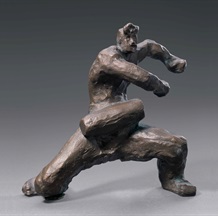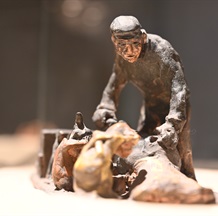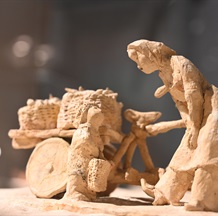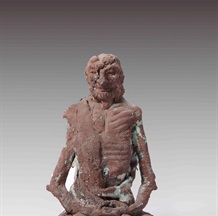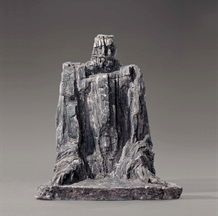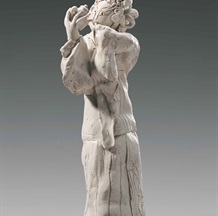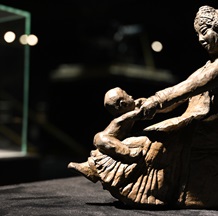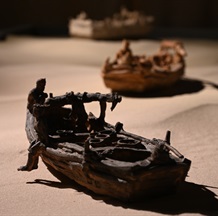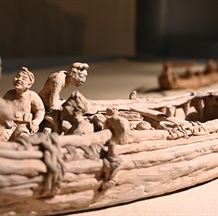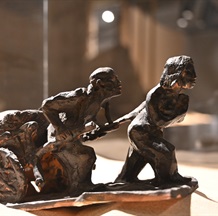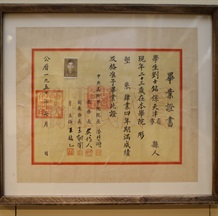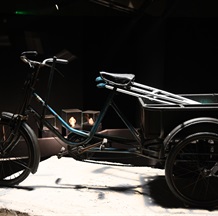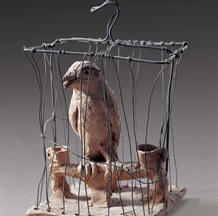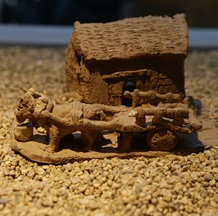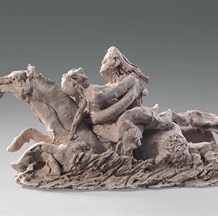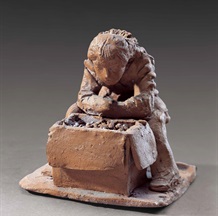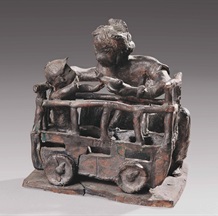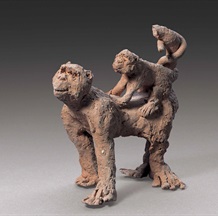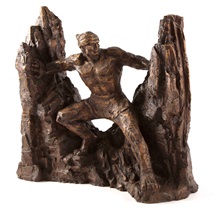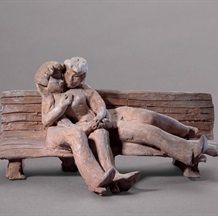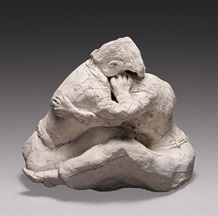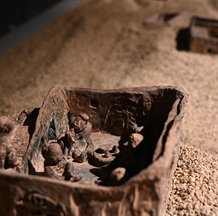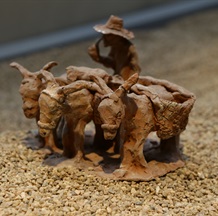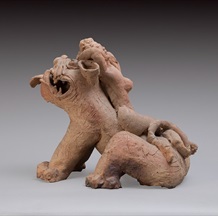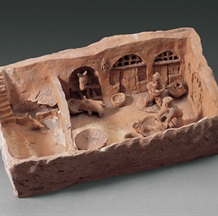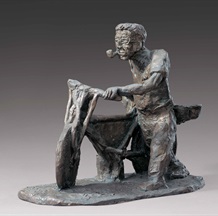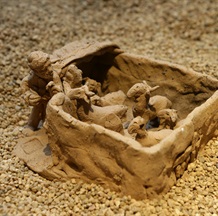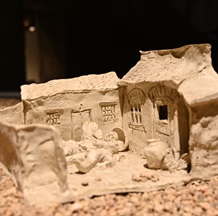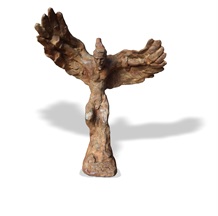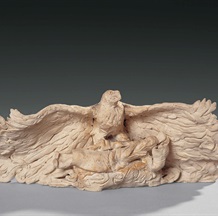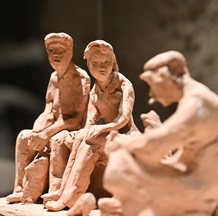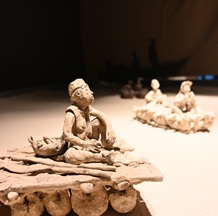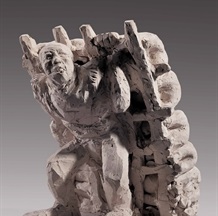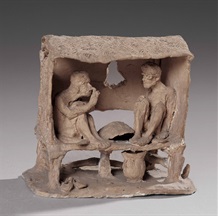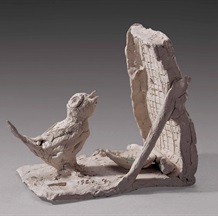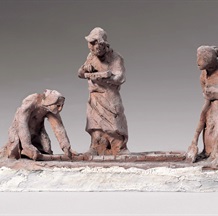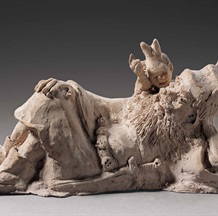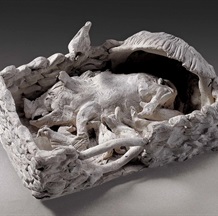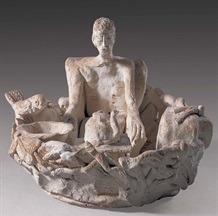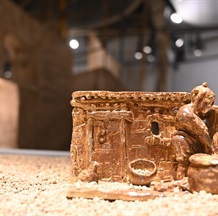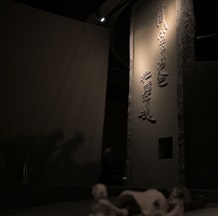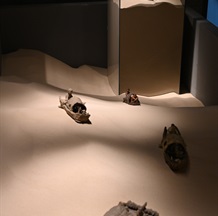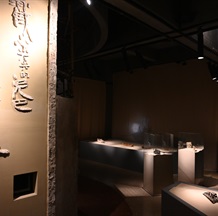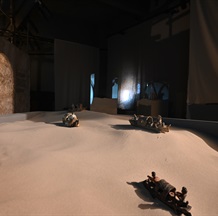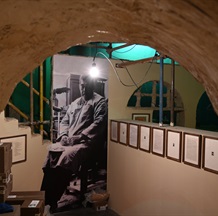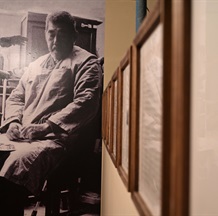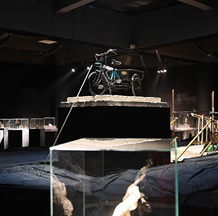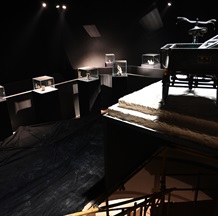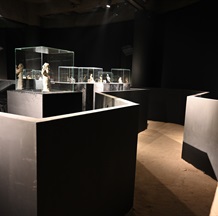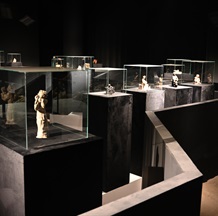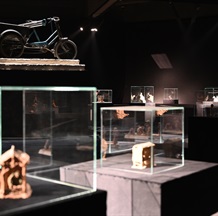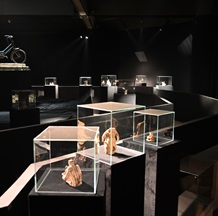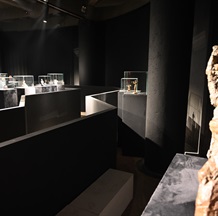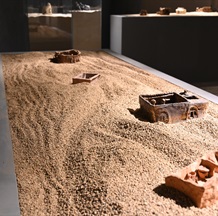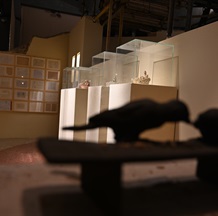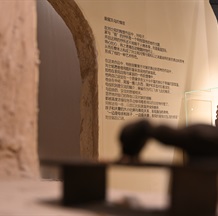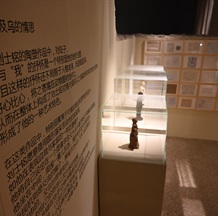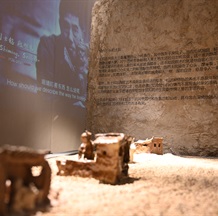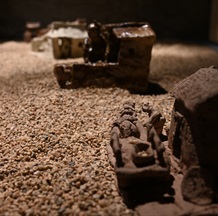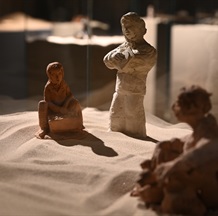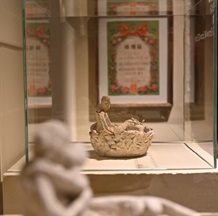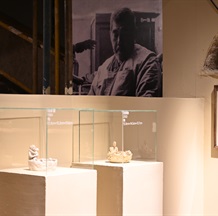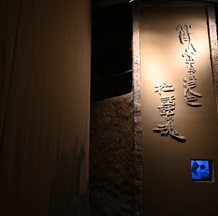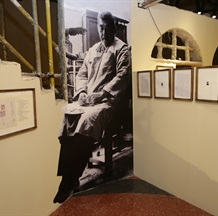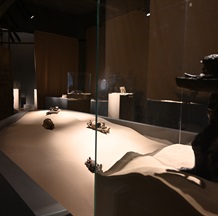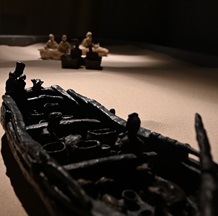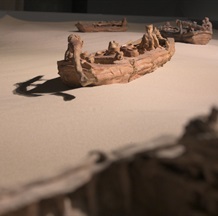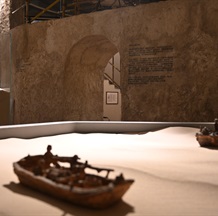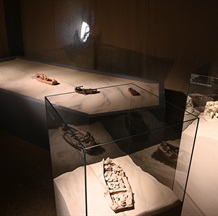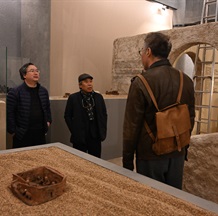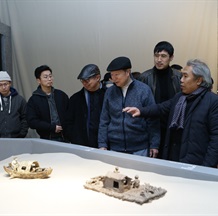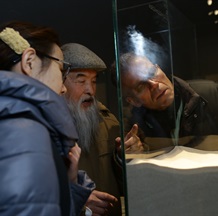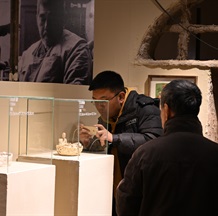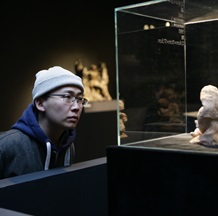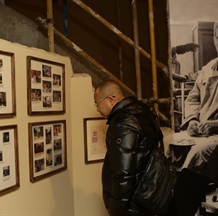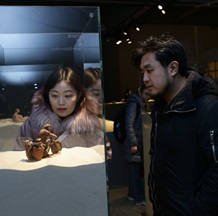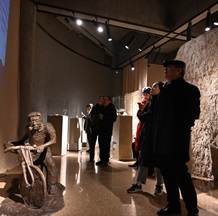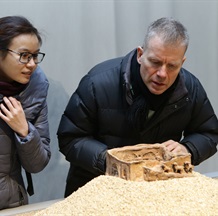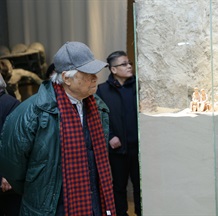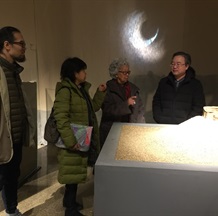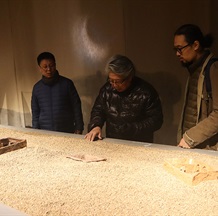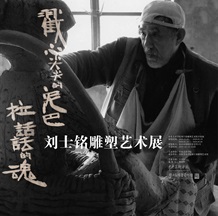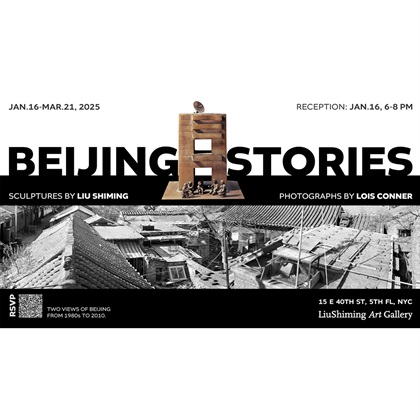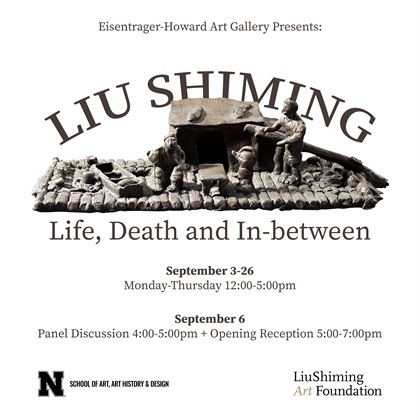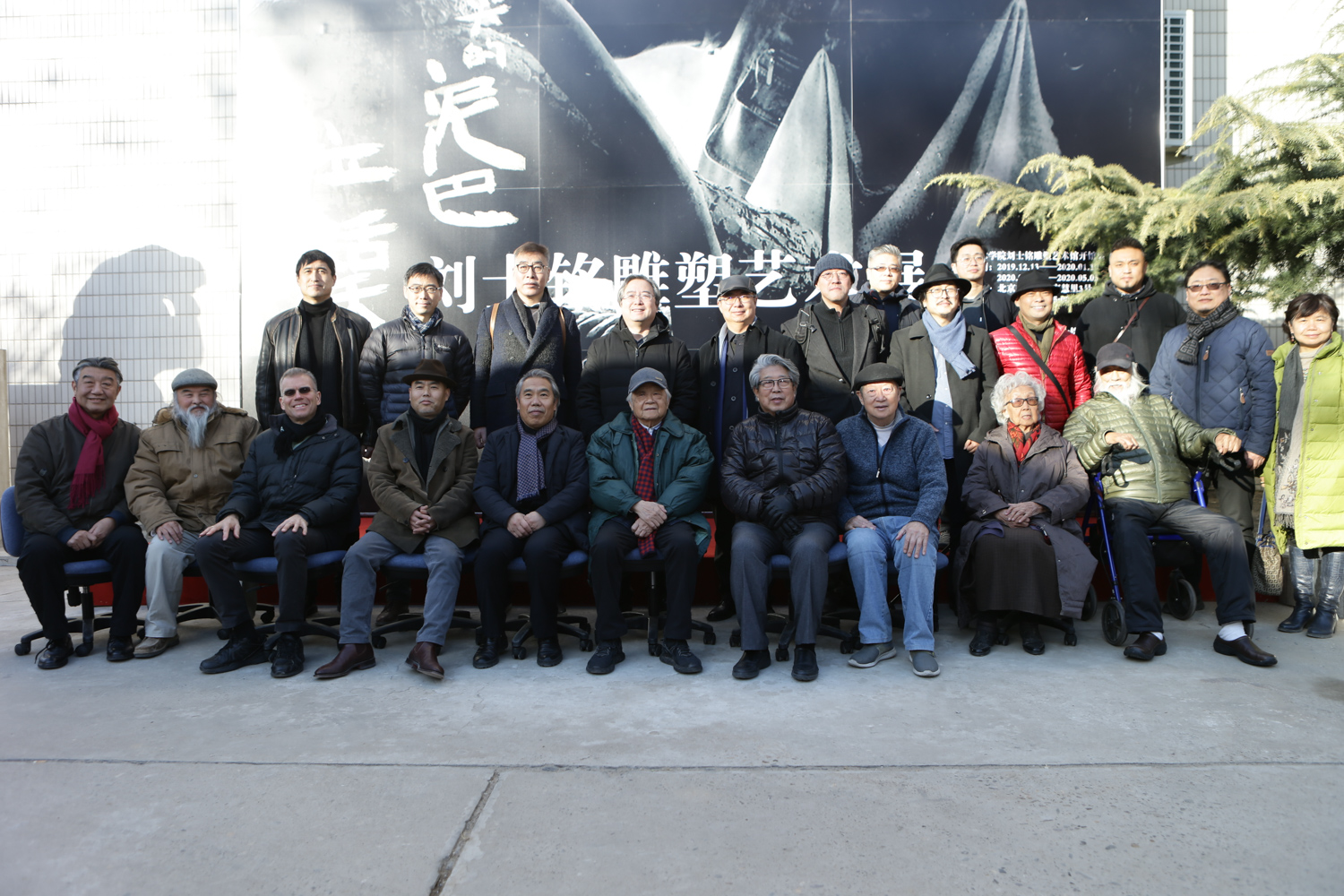
Group Photo of Honored Guests
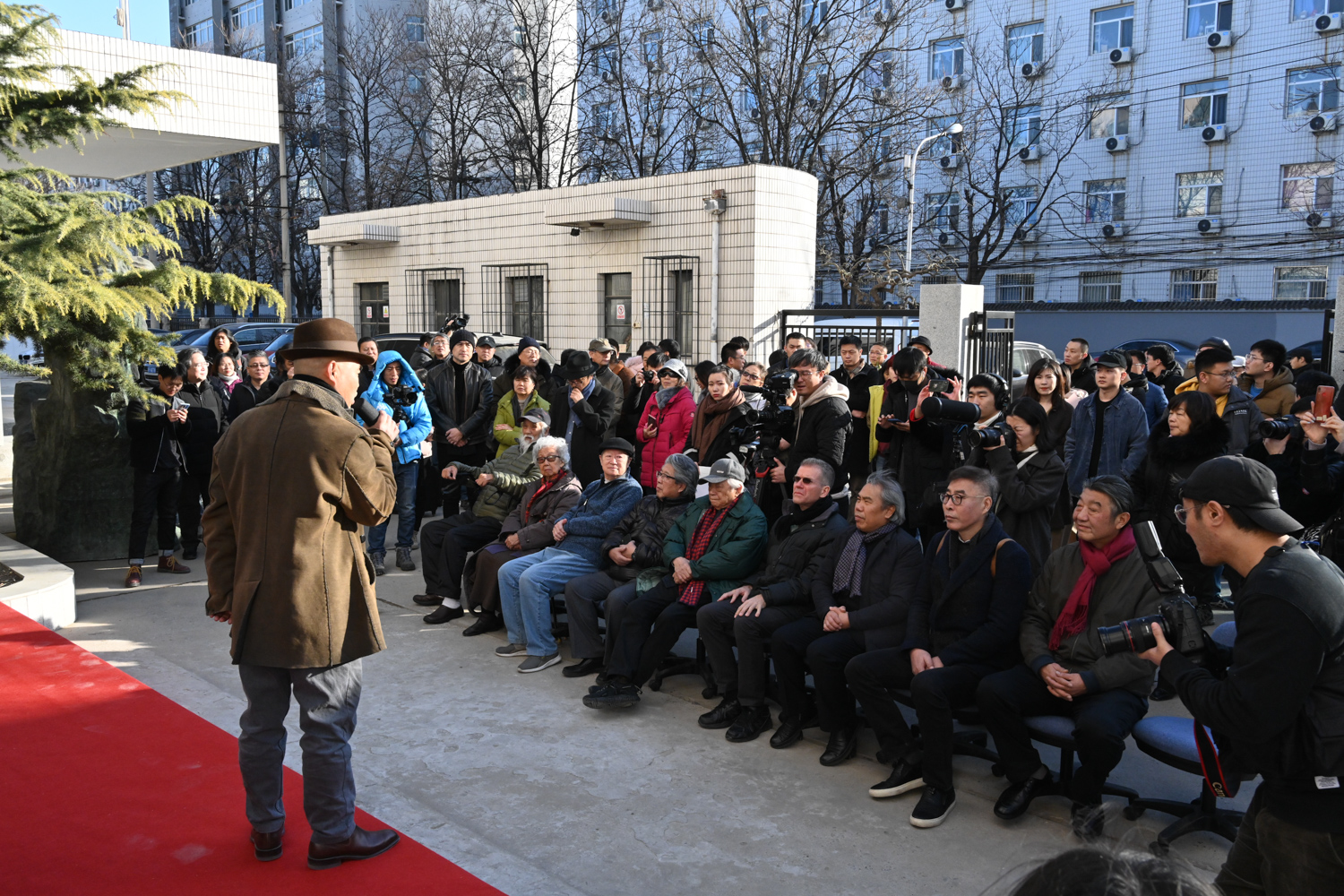
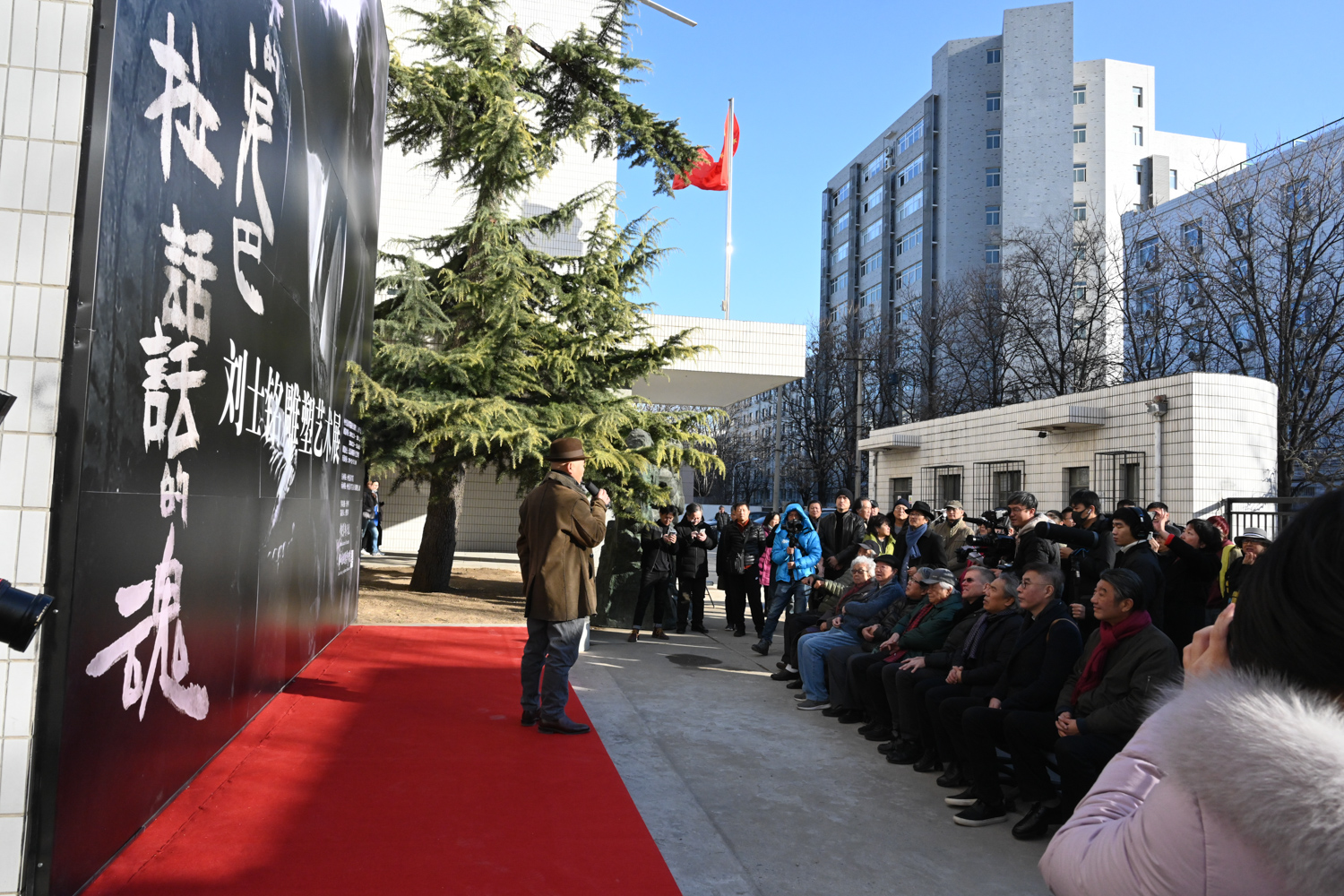
Opening Ceremony
Mr. Liu Shiming was enrolled in the National Art School in Beiping in 1946. After graduation, he taught and worked at the Central Academy of Fine Arts and the China Sculpture Factory, and had participated in the relief carving of the Monument to the People’s Heroes. His early works, such as “Measuring the Land” and “Splitting the Mountains to Let the Water Flow”, won wide acclaim. In 1961, he applied to leave Beijing and then began to work in Henan and Hebei provinces where he stayed for over ten years, which provided rich raw materials on people’s lives for his future works. In the mid-1970s, Liu retired early due to a health issue and returned to Beijing, where he worked for seven years in the National Museum of Chinese History (now the National Museum of China) reproducing cultural relics. In the 1980s, he was engaged in casting pottery sculptures at CAFA, with a large number of tiny pottery sculptures, he had established his own distinctive practice and style.As Mr. Fan Di’an, President of the Central Academy of Fine Arts and Chairman of the China Artists Association, pointed out in the Preface of the exhibition, Mr. Liu Shiming’s indifference to fame and perseverance in in-depth exploration leads him to his inner world. He returns to the soil of native culture, where he absorbs the strengths of folk sculpture, observes and feels the unadorned life and customs of the countryside, thus showcasing new variations and individuality in artistic themes and sculptural language. In a large number of his clay sculptures, the joy of life, the sensuality in kneading, and the warmth of clay are interwoven into a unique sculptural gesture, which is peculiar to Liu Shiming.
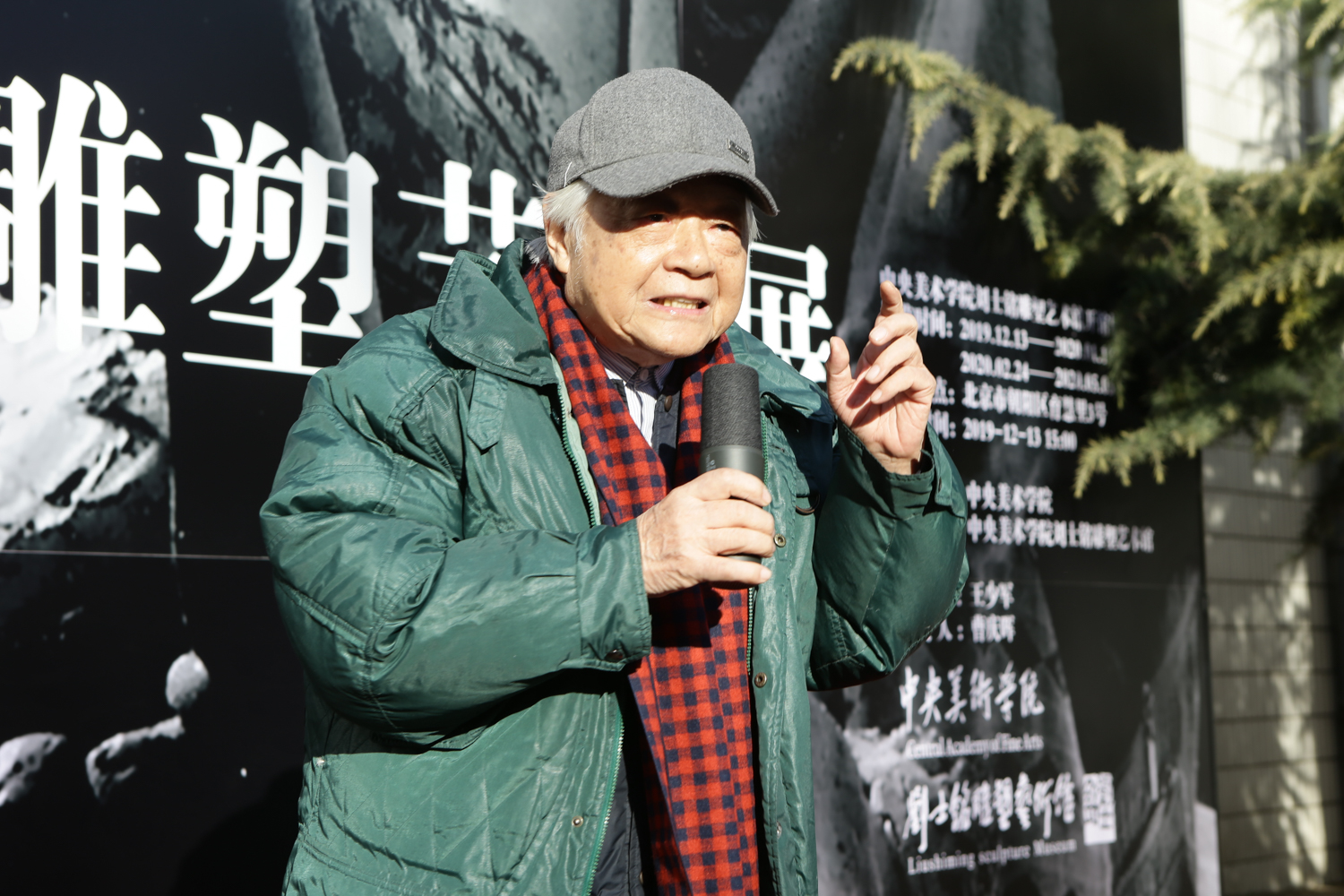
Professor Sheng Yang, sculptor and former Party Secretary of CAFA, delivering a speech.
At the opening ceremony, Mr. Sheng Yang spoke highly of the art of Liu Shiming, who always maintains a heart of love for the people and uses his art to extol and depict them. His works, which make the people feel the beauty of art, truly integrate local culture and folk art.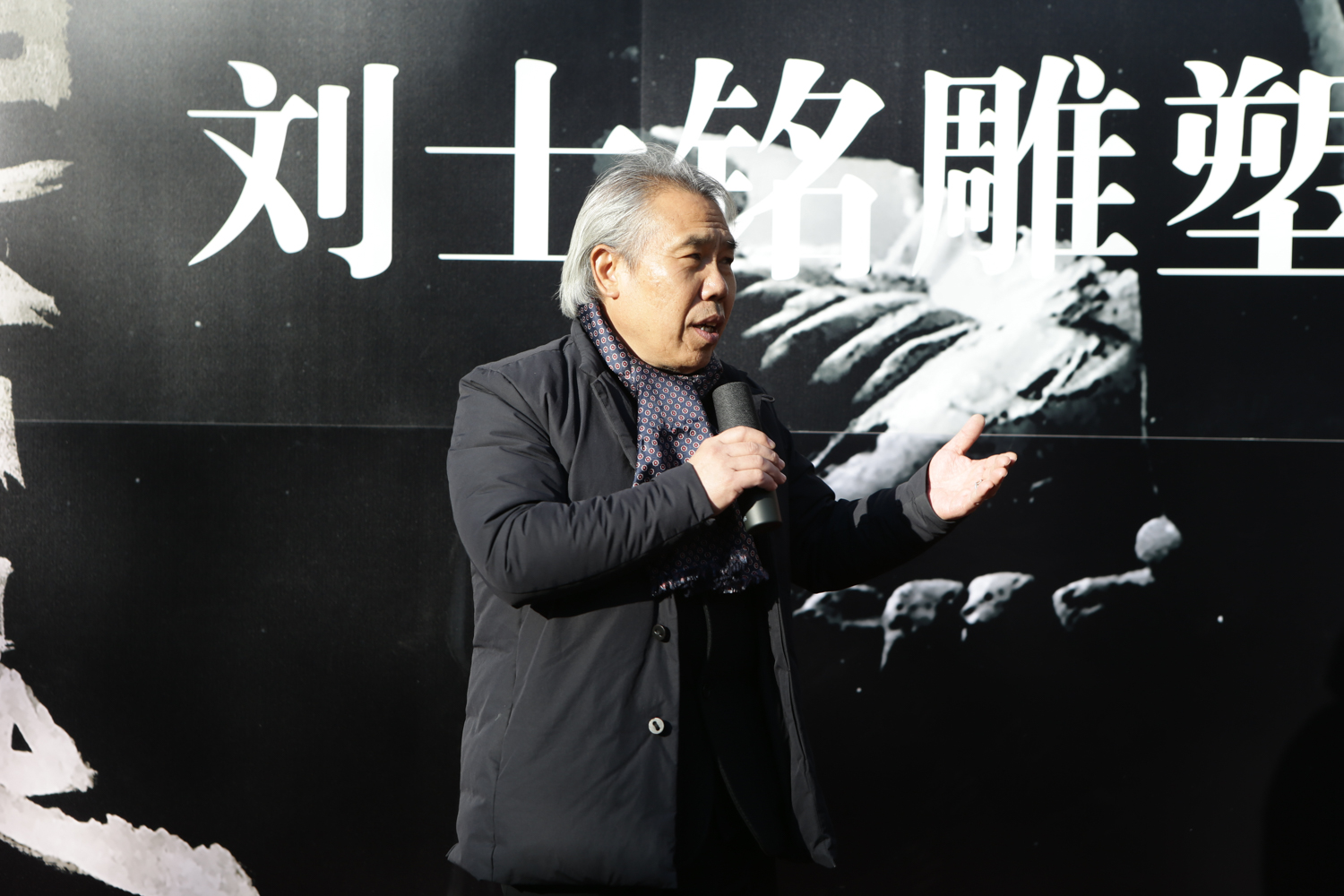
Professor Wang Shaojun, sculptor, Academic Advisor of the exhibition, and Deputy Party Secretary of CAFA, delivered a speech.
Wang Shaojun, director of the academic program for the exhibition of Liu Shiming Sculpture Museum at CAFA, also Deputy Party Secretary of CAFA, said in his speech that Liu Shiming’s art archive was like a key that allowed us to open the door to China’s original art. He hoped that we would probe into and reflect on Liu’s unique “Chinese methods” in sculpture creation that was rooted in Chinese social and cultural contexts and was filled with real concern and humanistic care. We should, thereby, strive to build a system of creation and study for Chinese contemporary art that truly reflects Chinese cultural qualities.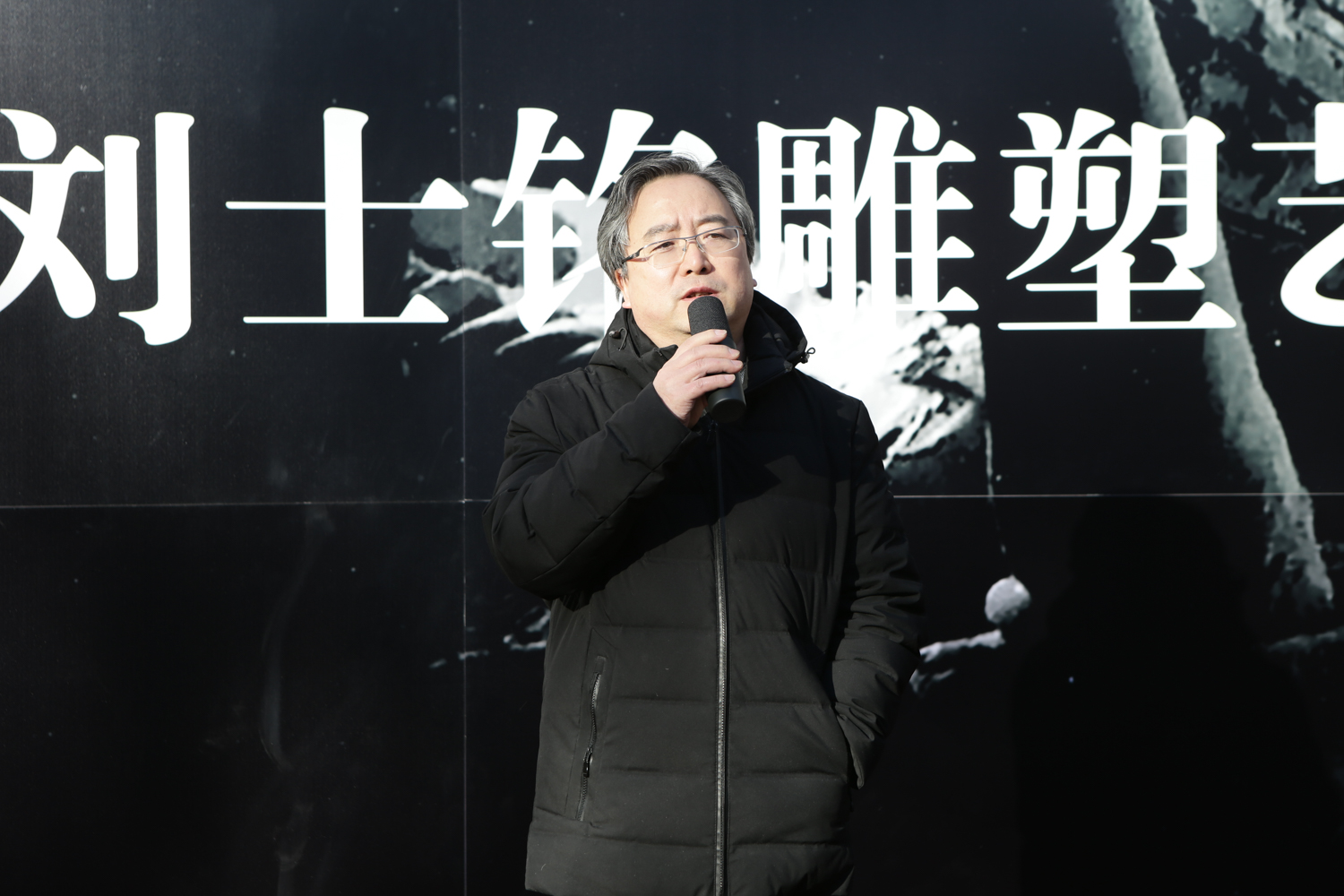
Professor Cao Qinghui, curator of the exhibition from the School of Humanities, CAFA, delivered a speech at the opening ceremony.
The curator, Professor Cao Qinghui from the School of Humanities, introduced his thoughts on planning the exhibition. He hoped to further interpret Liu’s artistic history through breakthroughs in this exhibition, to look for the local characteristics and experiences of his art, and to present Mr. Liu’s unique “Chinese methods” with an open and innovative vision.
Liu Wei, the son of artist Liu Shiming, delivered a speech.
“When I die, my friends will have the opportunity to see my works and talk to them in silence, which is better than anything”, Liu Shiming’s son, Mr. Liu Wei, recalled the words in his father’s notes and expressed his sincere gratitude to the guests, teachers, and students who contributed their efforts to the exhibition, hoping that people would get to know Liu Shiming, who was not very articulate and focused on his creation.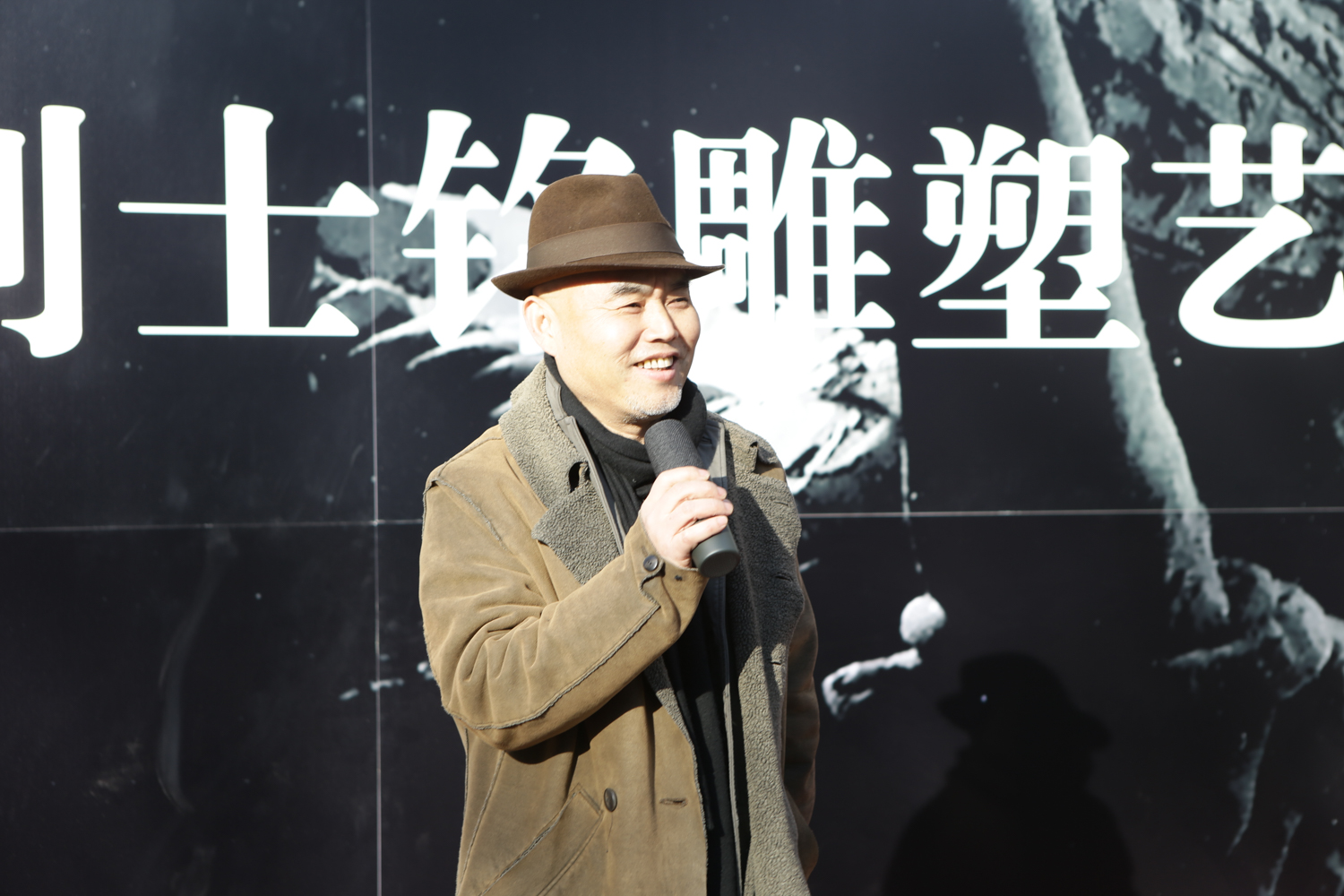
Professor Lyu Pinchang, Assistant Dean of the School of Fine Arts at CAFA, Director of the Sculpture Department, presided over the opening ceremony of the exhibition.
The exhibition featured more than 90 works of Liu Shiming’s sculptures, in addition to a wealth of photographs, manuscripts, sketches, and documentaries, which include many objects of commemorative and emotional significance, such as Liu’s graduation certificate from CAFA in 1950. The planning and design of the exhibition were characterized by Liu’s distinctive features. The title of the exhibition, “Souls in the Clay”, echoes the quality and traits of Liu’s sculptures with the unique flavor of inland China where Liu had lived and which he loved.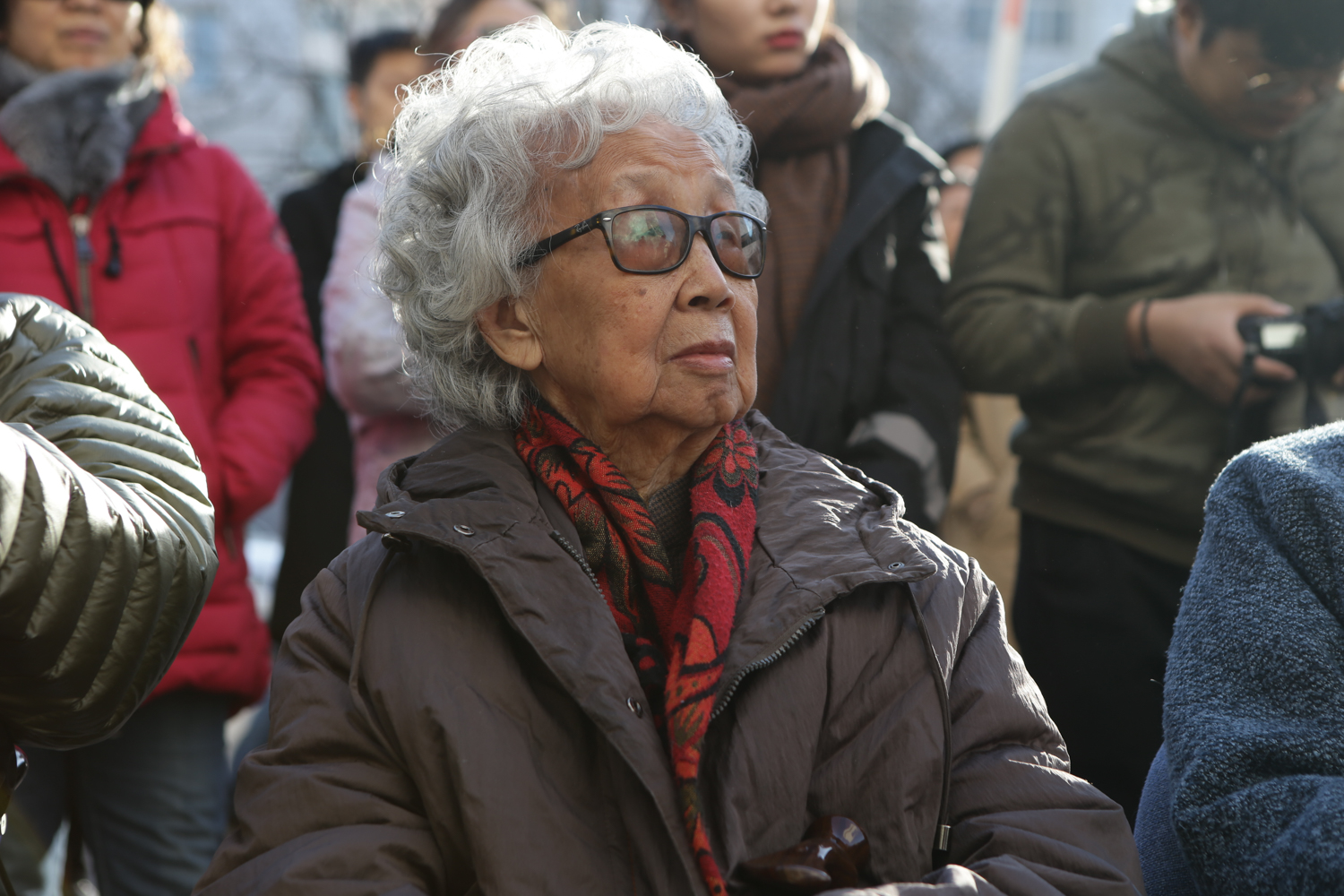
Zhao Ruiying, a senior sculptor at the opening ceremony
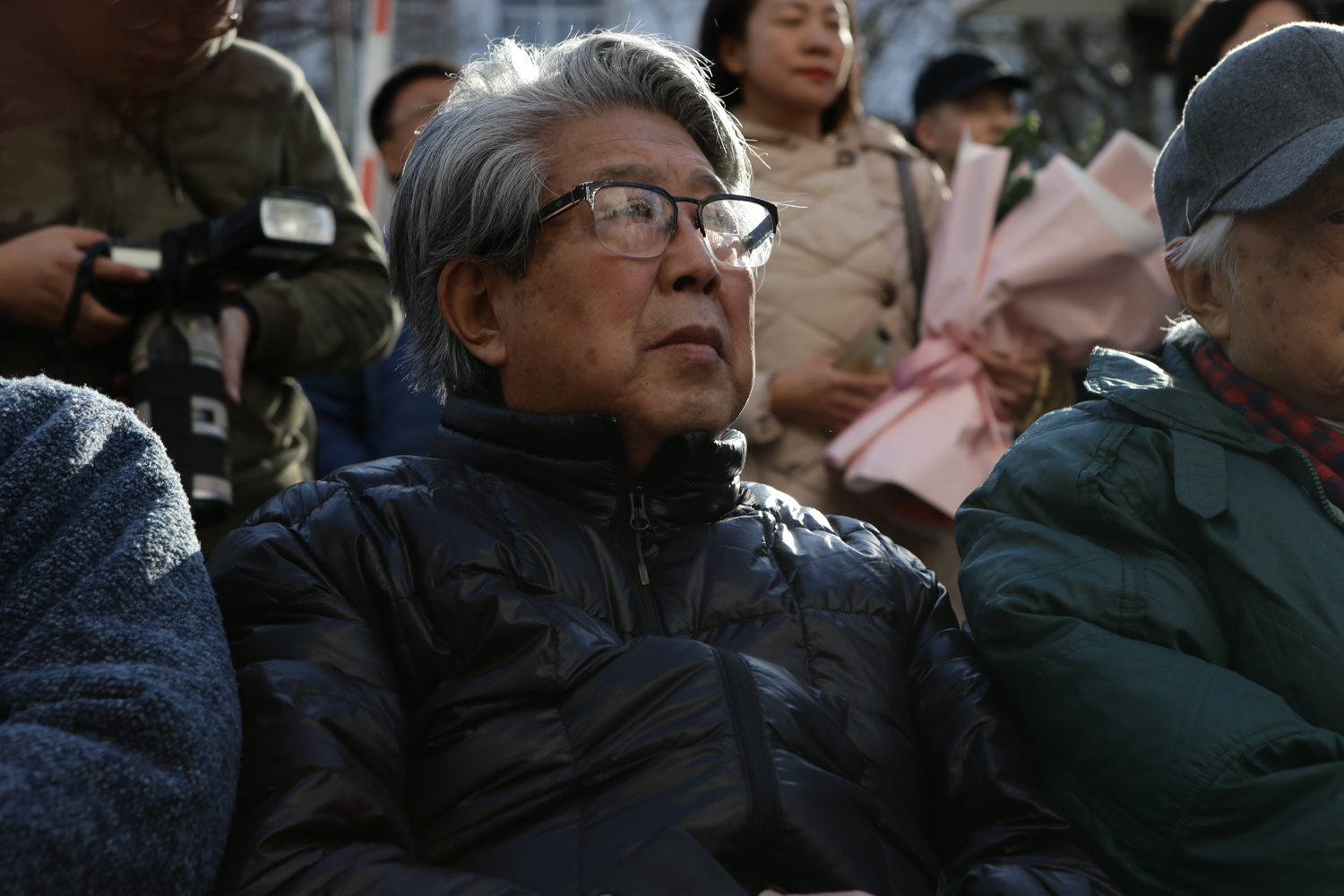
Professor Cao Chunsheng, Honorary Chairman of China Sculpture Institute, at the opening ceremony
The exhibition was over two floors. Based on Liu’s images of cave courtyards, the first floor was surrounded by a number of artificial sand pools and scenery. Through such sections as “Ferry that Carries Time”, “Country Courtyards in My Heart”, “Ordinary People in the Ordinary World” and “Loving One Thing on Account of Another”, the artist’s pottery sculptures about the ferry, the cave courtyard, ordinary people, and family affection were presented in a logical manner. Using the staircase built by scaffolding, the visitors can enter the second floor, where they can see the tricycle and crutches used by Liu under the skylight with a specially arranged music playing in the background, from which they can continue to enjoy Liu’s sculptures on different subjects along the walkway.This exhibition was extremely ingenious in its conception and planning, works and materials, scenes and layout, which was another constructive effort and attempt to carry out case studies of artists through exhibitions over the past decade or so.
The exhibition remained on view until May 5th.
Introductory Words on the Exhibition
This Shore and the Other Shore: Ferry that Carries Time
The Ferry series is a group of Liu’s sculpture masterpieces, whose materials include ferries and animal skin rafts on the Yellow River, as well as boats and bamboo rafts in regions south of the Yangtze River. Compared with other artists, Liu is more familiar with people’s livelihood in the Yellow River area, so he has a deeper memory of the ferry image there, a fuller reservoir of emotions, and a richer artistic expression. Unlike many literary creations on this subject, including folk songs, which generally reflect the hardships of life and the vicissitudes of the world through the depiction of boatmen, Liu’s artistic attention and emotional focus is mainly on the whole image of the “boat itself” and “boat as used by the people”, which conveys a life experience of simultaneous hope and hardship.
Liu sees the structure of the boat, the gathering and scattering of people, and the placement of cargo and livestock as objects with a story, which is a whole, so he keeps a balance in the expression of each element. The boats’ clappers, oars, and ropes, the jars and pots, the pigs, dogs, chickens and goats, even the straw mats rolled in the vats, all present their own characters and styles as do the boatmen in Liu’s work. This is an undulating landscape of riverboats. Here, we are always attracted by boats crammed with items of large and small, poultry and livestock, which is a symbol of time and an incarnation of hope. The boats that carry these are moored there, waiting to set sail from this shore to the other.
At My Home: Country Courtyards in My Heart
The Country Courtyard series is another masterpiece of Liu’s sculptures, in which there are both courtyards of bungalows and cave dwellings, neither of which is empty but inhabited by people. In the courtyard or patio, one can see men, women, and children, as well as donkeys, pigs, and chickens, which are full of this-worldly vitality. For Liu, who would like to integrate his life into the yellow earth, this series with the smell of the countryside is not so much a display of other people’s everyday trifles, but rather a narrative of his own myriad experience of life, which involves the complicated feelings in his heart. He kept the country courtyards in his heart, fondling them and reminiscing over them as if they were a family treasure, which no one could tear down. The fascinating overview of the work, and the story and emotion in the consistency and vivacity of people, objects, and houses in their correspondent places are always appealing.
Liu’s series of the Country Courtyard is a result of the processing of a long-term life memory, which is not a sketch or simulation of a certain farmhouse. He shapes the most essential structure and the most impressive appearance of the object in a logical way according to what he understands rather than what he sees. Therefore, he does not narrow down his view on the visible side (front or outside) of the object and ignores the invisible (back or inside), but expresses his understanding of the structure of the object itself or the structure in which the objects form an entirety, which is a result of a comprehensive life experience. It is this method and characteristic that makes his works and their details masterpieces with lingering charm, characterized by tangible contents based on the constructions of the objects and dynamic expressions based on emotional experiences.
Good and Bad Lives: Ordinary People in the Ordinary World
Apart from the series on ferries and country courtyards, most of Liu’s sculptures created during his lifetime are about the ordinary people in the ordinary world.
When we consciously link these works of his characters created in different periods together naturally, and when we deliberately neglect some of their particularities (for example, “Measuring the Land” being his well-known work, “Splitting the Mountains to Let the Water Flow”, being his representative piece, which both directly reflect the topic of social change) and thus bring the preconceived thematic priority into the judging and selection of his works, we can clearly feel that Liu always has heartfelt respect and appreciation for the lives of the underprivileged people who are struggling to make a living through difficult times. Popcorn makers, shoe repairers, westbound traders, vegetable sellers, drivers, travelers, actors, and raftsmen are all so familiar and engaging, exuding the warmth and glow of humanity, as if drawing you closer to him or her for a chat with them.
Liu himself is an ordinary person who has been tormented by life and has a damaged leg, so he is very aware of the difficulties of life and very sensitive to the precious quality of dignity. For him, living and how to live are the themes he is willing to contemplate throughout his life.
People’s lives, being good or bad, bitter or sweet, are all immersed in the past.
Philosophy of Love: Homeland Where Hearts Are Linked
In Liu’s artistic life, the expression of the world of love where hearts are linked established between people, people and family is a particularly dominant theme, through which we can see that there is not only artistic expression of the natural feelings of human beings but also artistic philosophies on the relationships of life.
On the one hand, he is always deeply moved by the selfless and unsophisticated maternal love, creating many works that reflect such a theme. On the other hand, his expression of the truth, goodness, beauty, love, lust, and virtue of love is direct and honest, such as the unconcealed and strong expression of lust in “Love Story on Horseback”. Besides, he has his own unique expression of love for the self and his family, as well as his own personal presentation of the harmonious side of life of man and wife, mother and child. The self-portrait made by Liu is different from others in that although it expresses the self, it must be set in the context of home with a fireplace, kettle, TV, sparrow, and other images that are very rich in meanings. The sculpture of home he made is straightforward and peculiar in its expression by using a round vat to symbolize a family and arranging the proportions of mother and child, and man and wife around it. “The mother and child on one side and the husband and wife on the other express my feelings about life”, said Liu himself.
Preface
Many artistic phenomena were often unnoticed when they occurred, but through the passage of time, new perspectives on past artistic phenomena can be gained and more in-depth interpretations can be made especially in new cultural and academic contexts. Such perspectives and interpretations are useful for us to view the value of artistic creation from a macro perspective and are helpful in promoting thinking about the development of art today.
Mr. Liu Shiming is a sculptor trained in the art education of New China. Led by the new Chinese art with new cultural ideals and artistic concepts that present the new appearance of the times, he casts many sculptures expressing the realities of life and production, especially those of the ordinary workers, which reflects the tradition of the sculpture education at CAFA in rigorous modeling and pursuit of inner quality, and reveals that he, as a person from the working people, praises and eulogizes labor in his art. Liu’s indifference to fame and perseverance in in-depth exploration leads him to his inner world. He returns to the soil of native culture, where he absorbs the strengths of folk sculpture, and observes and feels the unadorned life and customs of the countryside, thus showcasing new variations and individuality in artistic themes and sculptural language. In a large number of his clay sculptures, the joy of life, the sensuality in kneading, and the warmth of clay are interwoven into a unique sculptural gesture, which is peculiar to him.
In the study of Liu’s sculptural life, we see the important value of his exploration and creation in the “Chinese methods”, which focuses on the folk sculptural traditions and on the return and refinement of the aesthetics of folk sculpture, where the unique artistic methods of traditional Chinese sculpture can be observed. With the establishment of Liu Shiming Sculpture Museum, his exhibition is of great academic significance for the presentation and study of Liu’s sculpture. The curator, Mr. Cao Qinghui, places Liu’s sculptures at the starting point of the generation of Liu’s sculptural language by restoring the cultural contexts, which allows us to see the evolution of Liu’s “methods”, to appreciate the meaning of his sculptures, and to ponder over the modernization of traditional sculptures.
Fan Di’an
President of the Central Academy of Fine Arts
Chairman of China Artists Association
December, 2019.
Preface
I began to take an interest in the clay statues made by our ancestors when I was young. Although I did not know enough about the information and mysteries contained in them, the images, stories, and methods in the clay always attracted me and enabled my mind to travel through the long years and feel the undying spirit in them.
Mr. Liu Shiming and his pottery sculptures exert a subtle and enduring influence on my art studies. Under his influence, apart from studying systematically the concepts and methods of Western classical sculpture in the Academy, I also keep an eye on and ponder over the indigenous local cultural evolution and its modern development, thus maintaining a clear understanding of the modern Chinese sculptural narrative deeply impacted by Western modernity. This is certainly due to the unique practices and deeds of predecessors such as Liu, and I am grateful to them for establishing the foundation for my comparative thinking.
The great achievements and historical experiences produced in the birth and development of modern Chinese sculpture over the past century have made us see our own path increasingly clearly, and it is also very necessary to pay attention to and reconceptualize the path taken by artists like Mr. Liu and its value. For this reason, we include his case in the research that combs through sculptural history and builds the discipline of modern Chinese sculpture, in order to gain a three-dimensional and comprehensive knowledge of the achievements and experiences of the development of modern Chinese sculpture through a deeper study and discussion.
As the director of this academic project, I have a deep appreciation of the meaning that Liu and his art have for it. His art archive is like a key that allows us to open the door to China’s original sculptural art and experience. Based on the conditions and perspective of the project and starting from Liu’s case, we would probe into and reflect on his unique “Chinese methods” in sculpture creation that is rooted in Chinese social and cultural contexts and is filled with a real concern and humanistic care. We hope we could focus on modern art practices and experiences in modern Chinese sculpture development that diverge from Western narratives of modernity through a series of exhibitions and research, thereby striving to build a system of creation and study for Chinese contemporary art that truly reflects Chinese cultural qualities.
China has undergone such a tremendous social change through reform and opening up in the modern era, which will surely bring about a richer and more profound insight and value implementation. The formation of Chinese characteristics is the most important topic of this era, and in this exhibition we present today all the visions behind it which in a larger sense, are both part of this grand social practice and a reflection and exploration of this topic.
Professor Wang Shaojun
Deputy Party Secretary of the Central Academy of Fine Arts
Beijing, December 7th, 2019
Afterword to the Exhibition
Humanism and Localized Experience: The Academic Significance of “Souls in the Clay”Now, the exhibition comes to an end. As the curator, everything I want to convey is basically inside the exhibition, but I would like to express my personal opinion on the theme of the exhibition, “Souls in the Clay”, a long and involved phrase in the language unique to the Loess that Liu Shiming loves. I would like to remark on what the theme reveals and stresses in an academic sense as an afterthought to the exhibition.
Liu said that he is a person who plays with clay. A lot of people can play with clay, but only a few can do it well, and those who can produce clay statues that touch your heart are rarely seen, among which Liu is one, who has been neglected for a long time. One reason why Liu’s pottery sculptures can touch people’s hearts is that you can tell “a sense of life” in his works, which is recognized by many. However, as the generation of artists like Liu’s generally pay close attention to life experiences and know the realistic creation method, why could Liu’s seemingly humble clay objects, gadgets, men, and women have a stronger, lingering charm? I think the key to this is that Liu lives a more underprivileged life, with a lower posture, and knows more about equality, mutual respect, and love between people and life in nature, as well as the need to love and be loved. In Liu’s life and works, there is always a simple, sincere, people-oriented, and humanitarian spiritual quality that distinguishes his works from those of others, which cannot be completely replaced or explained by the realistic ideas and methods of creation that we are used to.
The souls in his works surely contribute to the spiritual quality unique to Liu’s art, but what constitutes art is not only the emotions but also the language that “narrates” the emotions well. Obviously, Liu’s sculptures fluently speak the “mother tongue” and “dialect” that he has acquired through his life, resulting in a localized experience that integrates life and language, which makes his works unique among the translated and localized academic sculptures. Being “sculpture outside sculpture” and “mainstream outside the mainstream”—such an evaluation of Liu perhaps states the fact and reason that he encounters an awkward situation in creation in the past and the value of his works begin to be re-examined today.
Lastly, I’d like to express my gratitude for the inspiration and thoughts brought by Liu’s sculptures. My thanks also go to all the staff members contributing to the exhibition and all the visitors!
Cao Qinghui
November 28th, 2019, at the night of Thanksgiving


